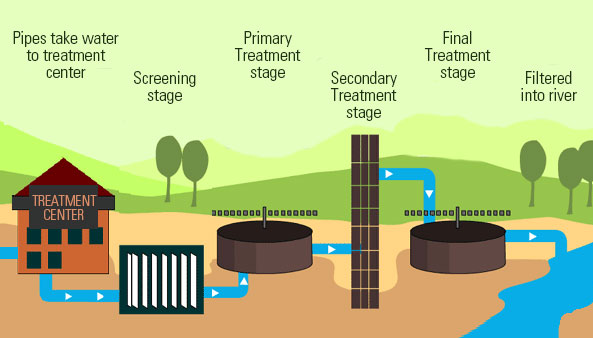Week 1: Wastewater
Where does a flush go?
This week we’ll talk about WASTEWATER
Wherever people live, urban, suburban, or rural, we have to deal with human waste and water used for cleaning and sanitation. What happens to it varies from place to place and is often expensive, complicated, and challenging to build and maintain. This week, a short background in what wastewater is and why we need to worry about it, a variety of reading and discussion on who has access to good sanitation and who does not, and a chat with wastewater treatment plant experts working in Bothell, WA and U.B., Mongolia tell us about challenges to planning wastewater infrastructure.
First, do you know why we need to deal with wastewater? What’s wrong with just letting it run into a nearby ditch or river? A quick reminder:
As you see in the short lecture, there are a lot of reasons, both for human health and for the health of the environment that it’s important to treat wastewater properly. But globally, many, many people don’t have good access to sanitation. In the U.S. lack of access is concentrated in poor rural areas, and crowded, expensive cities. Recently, investigations from several journalists in the U.S. have been focusing on the untreated waste in rural and impoverished parts of the country, students in the University of Washington course read about these cases in the rural south and indigenous reservation lands.
In both Mongolia and the U.S. another problem arises from the rapid growth of Cities, which is where our speakers will focus this week. In the U.S., recent crowding of urban areas with very high housing costs have lead to some relatively wealthy cities actually losing ground on providing sanitary plumbing for all buildings. while in Mongolia a lot of pressure comes from the growth of suburban ger districts. I’d like everyone to read about these situations to understand the enormous effort it takes to keep densely populate areas linked to sanitary infrastructure:
This from the Guardian newspaper on US urban growth:https://www.theguardian.com/us-news/2021/sep/27/water-almost-half-million-us-households-lack-indoor-plumbing
And this study around the communication and logistics of developing and paying for water treatment in the growing ger districts: https://www.mdpi.com/529276
As you read, consider what the different hurdles are to access – why is it difficult to treat the waste and provide clean water? Think also about responsibility and where you think the costs should come from.
Our live call this week will be with [] to discuss the technology, implementation and communication in large urban water treatment facilities and some of the costs and benefits. After the call, a video and captioning will be posted. Consider what you learn, and then post to the message board, is there anything new to you or surprising about managing waste? How is the management situation similar or different in the two urban situations? Do you have any follow up questions for the speakers?
